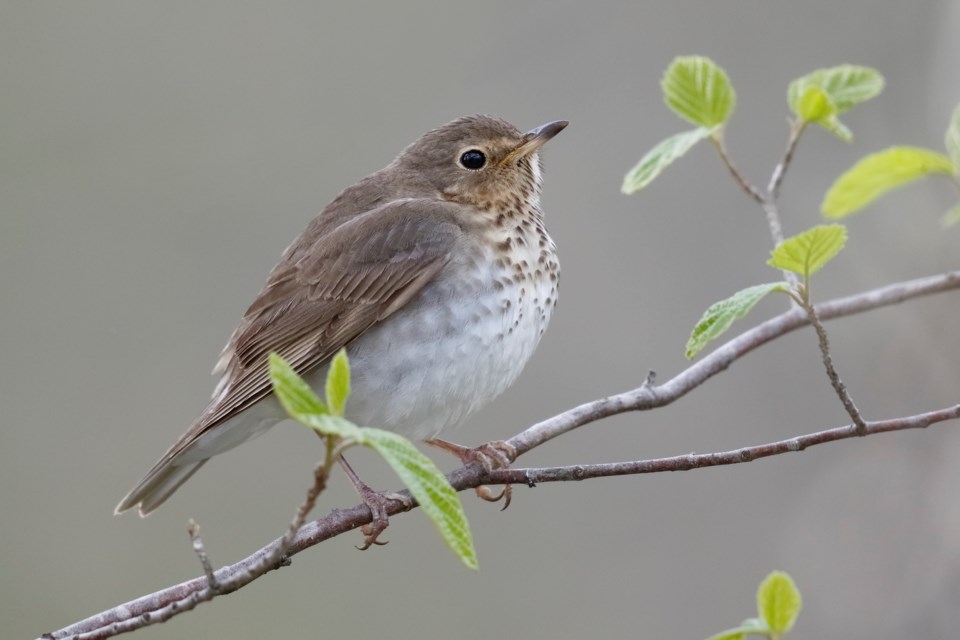After one of the coldest Aprils on record, May was one of the warmest, with official temperatures above 31C in Gibsons and Sechelt on the 15th. It has also been exceptionally dry with the only precipitation falling on the 5th. Warm, dry conditions should prove beneficial to nesting birds as cold, wet weather can cause nestling mortality from the conditions alone but also from inhibited insect populations.
During mid-May the balance of our spring migrants arrived, particularly flycatcher family members such as olive-sided flycatcher, western wood-peewee and willow flycatcher. The final warbler species, yellow warbler, arrived. This riparian species sings a song phoneticized as “sweet, sweet, sweet, I’m so sweet.” Listen for it in areas with willows. Cedar waxwings, one of the Sunshine Coast’s favourite birds, arrived right on schedule on the 15th.
The morning/evening song of Swainson’s thrush should be familiar to every local resident who has any native vegetation nearby. This is our Pacific coast equivalent of the famous European nightingale and they are in the same family. The two species are look-alikes, being small, brown, inconspicuous, skulking, and are rarely seen out in the open. Swainson’s is very abundant in our area and if you listen closely from a single spot in the right habitat, you may hear six to 10 male birds all singing from their individual territories. The birds arrive from Central and South America beginning in the second week of May and for the first few days their vocalizations are confined to single “whit” and “weep” call notes. A few days after arrival the male birds have established territories and they burst into song to attract a female, to warn off rivals, and to edify early summer evenings on the Sunshine Coast with their operatic arias. The song is heard from mid-May to early July, after which it peters out as the utility of their song is no longer required.
Of the final four of our summer migrants, willow flycatcher was reported on May 17, red-eyed vireo on the 22nd, and we still await black swift and common nighthawk. These latter two aerial insectivores are long-distance migrants, wintering in Central and South America and are expected by about June 1.
Recent uncommon birds reported in our area are green heron at the head of Porpoise Bay on 12-14th May (photo, John Hodges), a Wilson’s phalarope in the Sechelt Marsh on the 15th (photo, Martin Davis), and a pair of western kingbirds on 22nd at Roberts Creek jetty (photo, Andrew Chick) and the same birds in a nearby garden (Sandra Marriott). A pair of Bullock’s orioles have been seen regularly in the Sechelt Marsh, so hopefully they will nest.
To report your sightings or questions contact [email protected] or 604-885-5539. Good Birding.



